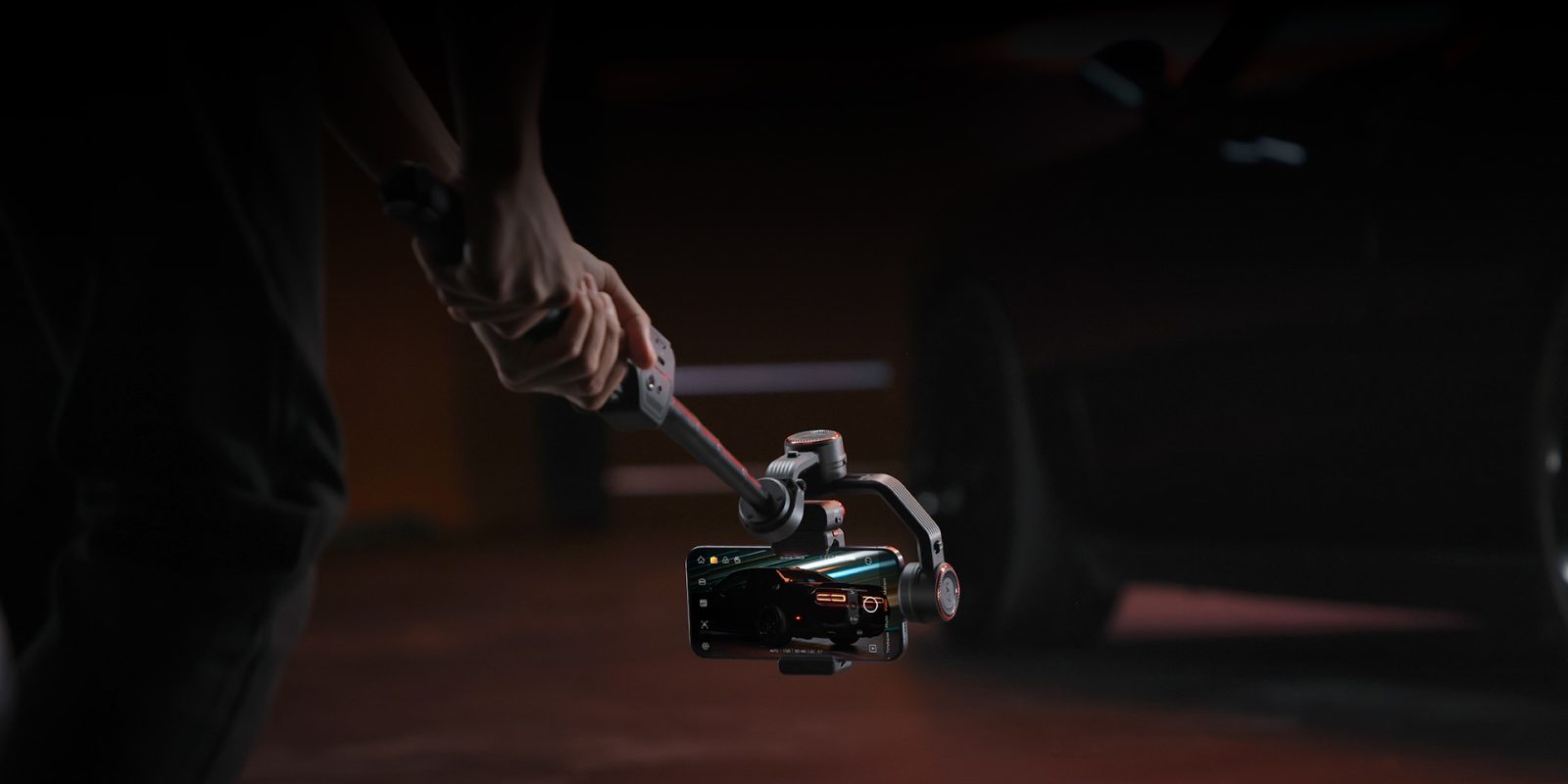
As someone who shoots a lot of mobile video — whether it’s for YouTube, social media, or just testing the latest gear — I’m always on the hunt for tools that can help me create better looking footage. We recently got our hands on the Hohem iSteady M7, a 3-axis smartphone gimbal designed to bring pro-level stabilization and tracking to your smartphone setup. After using it for a few weeks, we think it might be one of the best smartphone gimbals we’ve seen yet.
The Hohem iSteady M7 is a sturdy 3-axis smartphone gimbal designed for creators wanting professional stabilization and tracking. Weighing about 629g (1.4 lbs), it fits smartphones between 58mm and 90mm wide and 6.9mm to 12.5mm thick, handling devices up to 500g (17.6 oz). The gimbal provides 360° pan rotation, a tilt range of -50° to 275°, and a roll range of ±45°, allowing for many shooting angles. Its built-in 193mm extension pole is great for high and low-angle shots, and the three 1/4″-20 mounting points let you add accessories like additional handles or counter weights.
A notable feature of the iSteady M7 is its detachable 1.4-inch touchscreen remote, allowing real-time preview and target tracking from up to 10 meters away. The gimbal’s AI tracker can follow subjects like people, pets, and vehicles independently, without needing a specific app. It also includes an RGB and CCT fill light with 360 colors and adjustable temperatures from 2700K to 6500K. With a 3200mAh battery, the iSteady M7 lasts up to 12 hours under stable conditions, about 8 hours with AI tracking, and 3 to 4 hours when using AI tracking and the fill light together.
Hardware and build quality
Right out of the box, the iSteady M7 feels like a serious tool. It’s more substantial and heavier than something like the DJI Osmo Mobile series, but it makes up for it with rock-solid build quality. The grip is comfortable for extended use, and the controls are intuitive — a big plus if you’re shooting on the go and need to make adjustments quickly.
The iSteady M7 comes in a rigid carrying case, similar to what would come from DJI’s Ronin series of gimbals. This beats out the cloth bags DJI includes with the Osmo gimbals.
Stabilization and shooting experience
The core purpose of a gimbal is smooth footage, and the iSteady M7 delivers. we tested it while walking, running, doing slow pans — the 3-axis stabilization held up beautifully. It even handled sudden turns or quick movements with surprising finesse.
There are multiple shooting modes, including:
- Pan follow
- POV (full follow)
- Lock mode
- Sport mode (for fast motion)
- And inception mode (for those dramatic barrel-roll shots)
Switching between them is quick, and the motors respond well without lag.
Smart tracking
This is where the M7 really stands out.
That magnetic AI module we mentioned earlier? It’s not a gimmick — it’s shockingly effective. we set it on a tripod and filmed myself walking back and forth, moving around, even ducking slightly behind objects. The module kept me centered the entire time.
For solo creators, this is a game-changer. You don’t need someone behind the camera, and you don’t need to rely on software tracking from within apps (which can be hit or miss).
App experience
The Hohem Joy app is where you’ll unlock more creative features — like motion timelapses, panorama modes, and gesture control. The UI isn’t quite as refined as Apple’s own or something like LumaFusion, but it’s functional and easy to learn.
One thing we liked: you can program motion paths for repeatable camera moves. That’s incredibly useful for product videos, tutorials, or anything where consistency is key.
Battery life
Hohem claims up to 18 hours of runtime with the AI module off, and around 10 hours with it on. We haven’t fully run it dry in one session, but we got through several long filming days without needing to recharge. There’s also USB-C passthrough charging, so you can top up your iPhone while filming.
Downsides?
Nothing major, but a few things to note:
- At roughly 1.3 pounds, it’s heavier than some competitors. Not a dealbreaker, but it could be a factor for long handheld shoots.
- The AI module, while excellent, adds a bit of bulk to the top of your phone. Not a huge issue, but worth considering if you’re using a heavy iPhone Pro Max.
Is the Hohem iStead M7 worth buying?
The Hohem iSteady M7 is a standout gimbal for mobile creators. Between its rock-solid stabilization, excellent AI tracking, and a versatile app, it’s one of the best all-around options we’ve tested in a while.
If you’re serious about iPhone videography — whether you’re a content creator, filmmaker, or just someone who wants to make more polished mobile videos — the M7 is absolutely worth considering.
At around $150, it punches well above its weight.
FTC: We use income earning auto affiliate links. More.